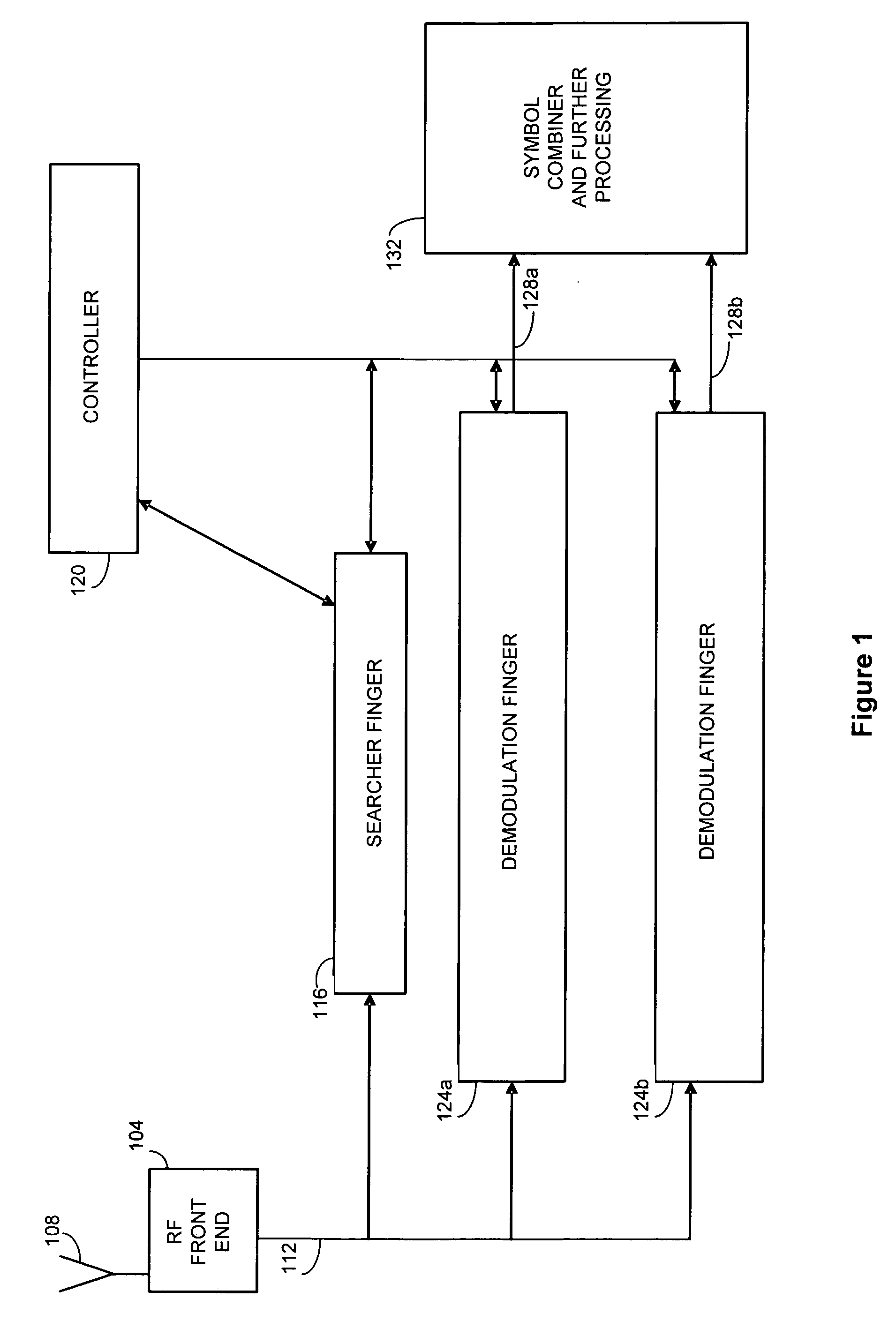Method and apparatus for selectively applying interference cancellation in spread spectrum systems
a spread spectrum and interference cancellation technology, applied in the direction of amplitude demodulation, line-fault/interference reduction, pulse technique, etc., can solve the problems of reducing and affecting the signal quality of the communication channel. , to achieve the effect of increasing the strength of the desired signal
- Summary
- Abstract
- Description
- Claims
- Application Information
AI Technical Summary
Benefits of technology
Problems solved by technology
Method used
Image
Examples
Embodiment Construction
[0025] With reference now to FIG. 1, components of a baseline or prior art spread spectrum communication receiver 100 are illustrated. As depicted in FIG. 1, signals are provided to a radio frequency front end 104 by an antenna 108. In a typical environment, a number of different signals, for example, signals produced by different base stations, different sectors of a base station, or multi-path or reflected versions of the signals can be received at the radio frequency front end 104. As can be appreciated by one of skill in the art, signals from different base stations or different sectors of a base station are typically identified by an associated path number, which identifies the base station or base station and sector according to the time offset of the signal path. Multi-path versions of signals are identified by the path number of the line of sight version of the signal, plus an additional time offset to account for the longer path followed by the reflected signal. As can furt...
PUM
 Login to View More
Login to View More Abstract
Description
Claims
Application Information
 Login to View More
Login to View More - R&D
- Intellectual Property
- Life Sciences
- Materials
- Tech Scout
- Unparalleled Data Quality
- Higher Quality Content
- 60% Fewer Hallucinations
Browse by: Latest US Patents, China's latest patents, Technical Efficacy Thesaurus, Application Domain, Technology Topic, Popular Technical Reports.
© 2025 PatSnap. All rights reserved.Legal|Privacy policy|Modern Slavery Act Transparency Statement|Sitemap|About US| Contact US: help@patsnap.com



